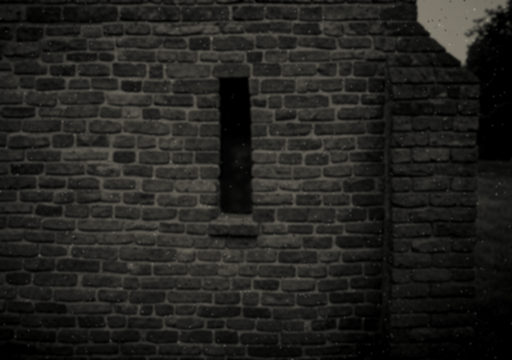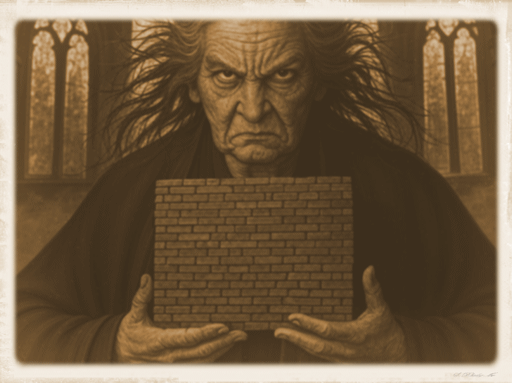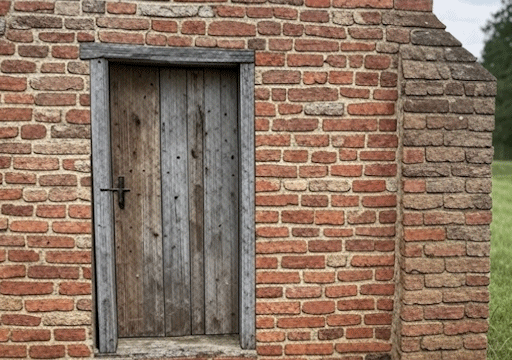|
Gilbert Murray MP's Westminster Blog Gypping in the Marsh in Times Past A Brief History of Gypping in the Marsh Gypping in the Marsh - the Murray Connection Dates in the Gypping in the Marsh Village Calendar Saint Bodkin and his Holy Well Abigail Morris: Britain's Last Anchoress Famous Gypping in the Marsh Artists Gypping in the Marsh Local Businesses |
Abigail Morris: Britain's Last AnchoressAnchorites and anchoresses were a particular type of hermit who withdrew from secular society to lead a solitary, ascetic life of prayer. They took a vow of stability of place, and were enclosed voluntarily - and permanently - in small cells that were often attached to churches. Having taken a religious rite of consecration that closely resembled the funeral rite, they were considered to be dead to the world, and living saints. As their lives were given almost entirely to religious devotion, people often came to anchorites for spiritual advice. Essentially a medieval phenomenon, the anchorite tradition came to an end in Britain with Henry VIII's dissolution of the monasteries between 1536 and 1539. However, it was revived briefly in Gypping in the Marsh in the 19th century, when Abigail Morris, an extremely devout young woman, persuaded the vicar of Saint Bodkin's church, Ezekiel Murray, to allow her to become an anchoress attached to the church. The Construction of the Anchorhold and Abigail's ConfinementIn August of 1853, Reverend Murray had a brick cell measuring ten feet square - an 'anchorhold' - built against the north wall of the nave of Saint Bodkin's church. During a solemn service which was conducted by the Bishop of Lincoln, the final bricks were laid and Abigail was walled up inside. The cell had two small windows. One was a shuttered, ten inch square 'squint' that faced into the church, through which Abigail was able to participate in church services and provide spiritual advice to visitors. A second window - narrow, barred and facing onto the churchyard - allowed access to those who saw to Abigail's physical needs. The cell had no door.  The first twenty-two years of Abigail's confinement passed without any issues, and the parishioners of Gypping in the Marsh were proud to have the anchoress at the heart of their community. People visited Gypping in the Marsh specifically to visit Abigail and ask for her advice on spiritual matters through the shuttered squint. Abigail's Crisis of FaithIn 1875, after twenty-two years of confinement within her anchorhold, Abigail suffered a crisis of faith and started calling to be released from her cell. As time went on, her pleas to be let out became so loud and so frequent - and according to church records, so personally abusive towards the vicar - that in 1876, Reverend Murray felt obliged to act: he had the internal squint between the anchorhold and the nave bricked up to prevent Abigail from disrupting church services. Abigail's Escape and Subsequent RecaptureAbigail managed to escape her confinement in 1878, with the help of a sympathetic local who removed some bricks from around the anchorhold's one remaining window with a sledgehammer, enabling her to climb out through the hole. Fearing for Abigail's immortal soul, Reverend Murray engaged the help of the 15th Earl of Gypping and his foxhounds to hunt her down. Given that Abigail had not been able to wash for over twenty years, it was not difficult for the hounds to track her scent and she was discovered the day after her escape, sheltering in a remote barn some miles away from the village. For the good of her eternal soul - and despite her vigorous and voluble protests - Abigail was returned to Gypping in the Marsh, where Reverend Murray had her promptly reinterred in her anchorhold, which was repaired and strengthened to prevent future escape attempts. Abigail's Later YearsAbigail remained confined in her anchorhold for the rest of her life, becoming increasingly unstable and ever more loudly abusive as each year passed. In her later years, she took to flinging her excrement out of the tiny window with unerring accuracy at anyone who passed by, so the number of visitors she received dwindled to practically none. During the last years of her life, the only human contact she had was with the one kindly villager who brought her food and water and removed whatever bodily waste had not already been flung out of the window each day.  Abigail's DeathAbigail died in 1903. On the day after her death, Reverend Murray instructed a local tradesman to knock an opening through an exterior wall into the anchorhold so that Abigail could be buried. When Reverend Murray entered the anchorhold, he discovered that Abigail had chalked the words 'REV. MURRAY MUST DIE' repeatedly onto the internal walls. Abigail was buried beneath the floor of the anchorhold the following day by a visibly relieved Reverend Murray.  Abigail's Anchorhold Today: a Remarkable SurvivalAfter finding very little interest amongst locals in taking up Abigail's position, Reverend Murray had the opening in the wall widened and made into a doorway, and the anchorhold was put to a new use: after being given a deep clean, it became a shed for the sexton. The anchorhold can still be seen today, attached to the north wall of Saint Bodkin's church. It is a remarkable survival: the only brick-built anchorhold in the country, once home to Britain's last anchoress.  Copyright 2003-2025 www.gilbertmurray.co.uk. All rights reserved. |